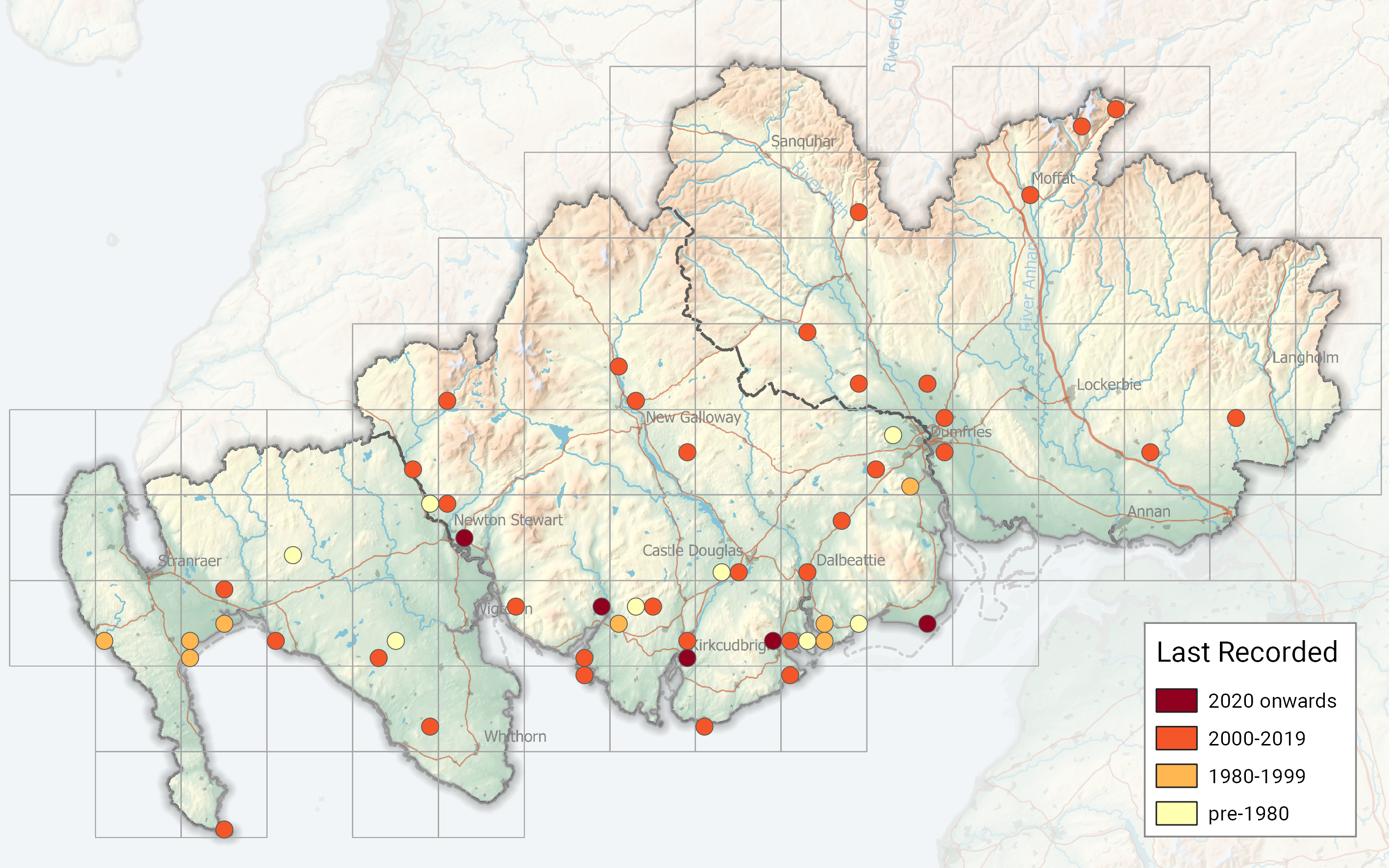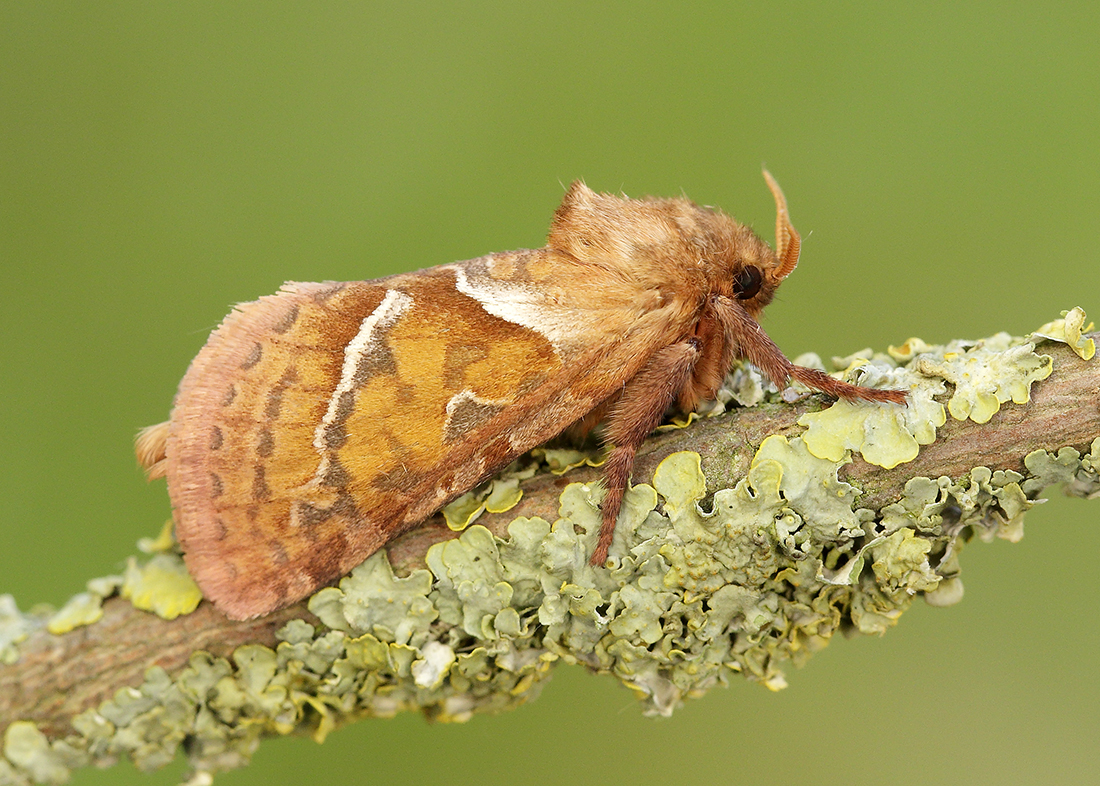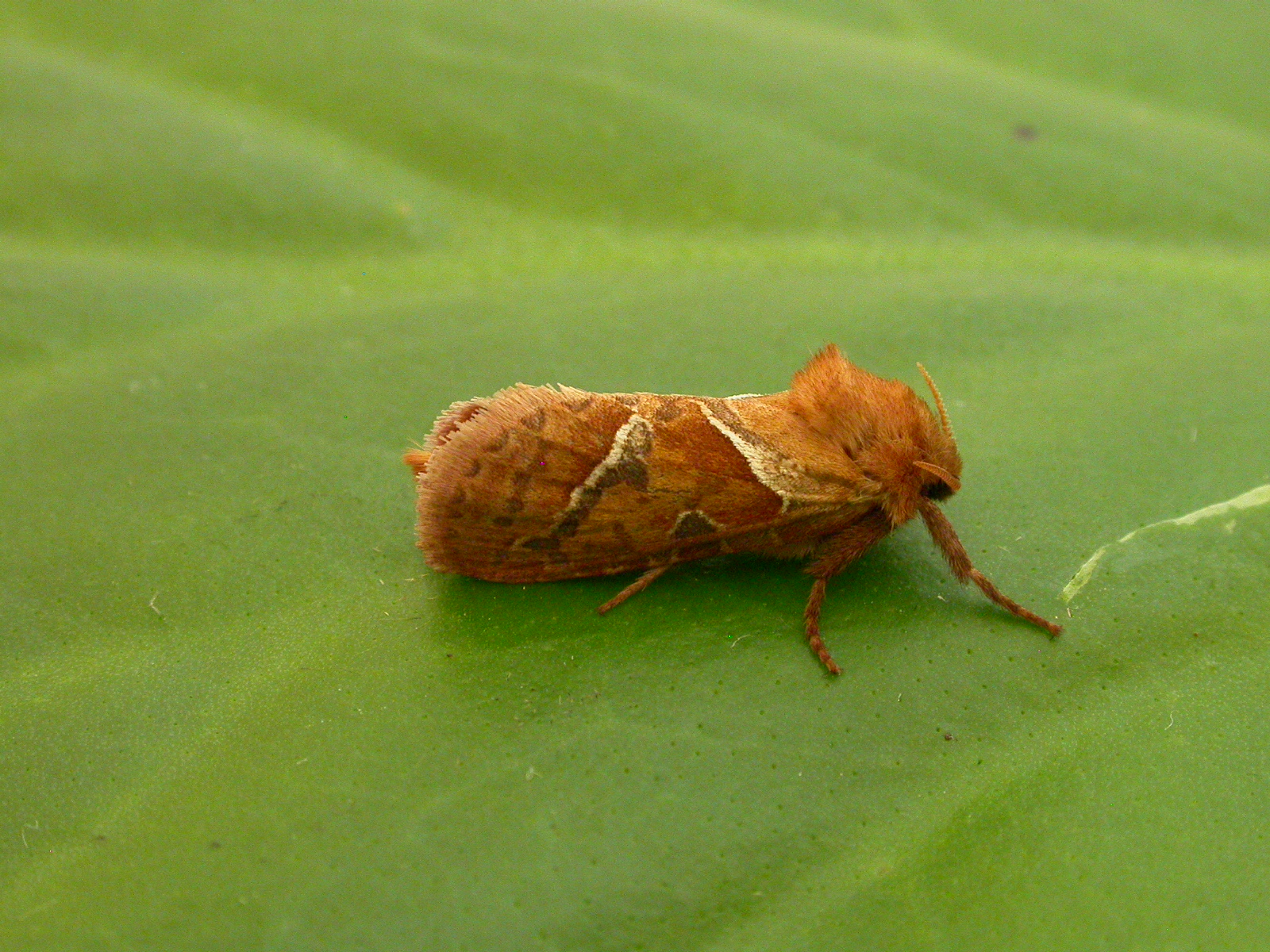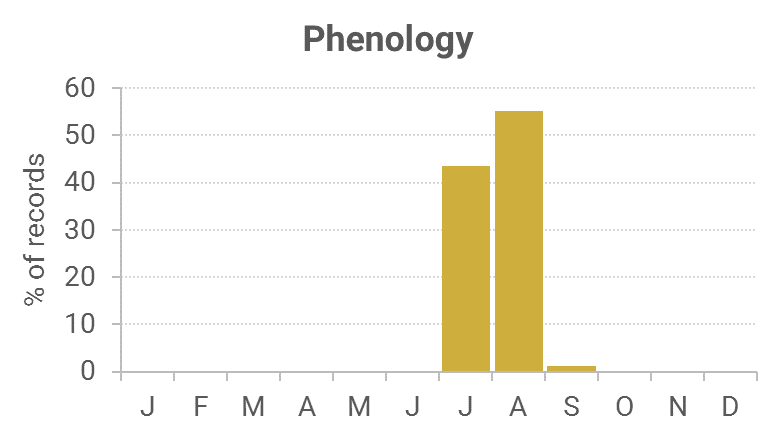Identification
Both sexes fairly distinctive. The Orange Swift has no proboscis, so it is never found at sugar or flowers. Recording the sex would be worthwhile.
Life cycle
One generation. Overwinters as a larva, but probably taking two seasons for development. Pupates underground.
Larval foodplants
Many herbaceous plants, feeding in the roots.
Habitat
Downland, moorland, gardens, woodland rides and roadside verges to name a few.
History 1860-2010
William Lennon (1863) in his ‘List of Lepidoptera taken near Dumfries’ first recorded it in the Terregles Meadows, but it was not common. W. Douglas Robinson (1870-71) had found it not very common during July on Almorness (VC73). Gordon (1913) found it on the roadsides among long grass near Corsemalzie, Wigtownshire, 18th July 1906, which is a typical habitat.
During 1975-93 there were twenty records from the Rothamsted stations. Then from 1992 to 2010, the regularly trapped sites at Kirkton and Durisdeer provided 75% per cent of the one hundred records during this period, the rest from widespread sites across the region.







